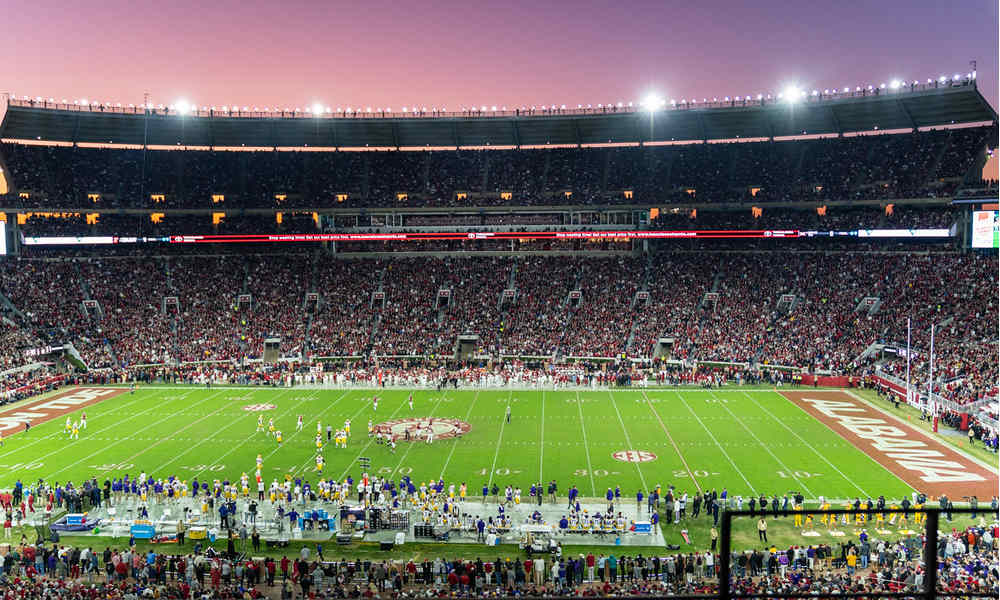Reviews
Inside College Football’s Evolving Landscape: What Every Fan Needs to Know

College football is no stranger to change, but the shifts we’re witnessing now transform the sport in ways that will forever alter how fans experience it. For fans, keeping up with these changes is no easy task. But understanding what’s happening is critical to appreciating how the game will look in future years.
Let’s explore the significant shifts in college football and what they mean for fans who thought they had this sport all figured out.
Conference Realignment: The New Power Structure
College football’s conferences, once the pillars of tradition and rivalry, are no longer recognizable. Powerhouse teams are jumping ship, forming alliances that shift the balance of power and leave some conferences scrambling to stay afloat.
The Big Ten and the SEC are quickly becoming the sport’s dominant forces, swallowing teams from other conferences and effectively transforming college football into a smaller version of the NFL.
The most notable realignment involves the collapse of the Pac-12. Historic programs like USC and UCLA have left for the Big Ten, while the Big 12 picked up Arizona, Arizona State, and Utah. These moves are shaking up rivalries and forcing teams into awkward geographical pairings that seem more designed for television ratings than regional pride. For instance, who would have imagined California and Stanford competing in the Atlantic Coast Conference?
What’s clear is that this realignment is far from over. Powerhouse schools like Florida State and Clemson are openly searching for a way out of the ACC, and it wouldn’t be surprising to see even more consolidation into the Big Ten and SEC. Two super-conferences may dominate the sport, leaving smaller schools to fend for themselves in an increasingly competitive landscape.
Expanded Playoff System: More Teams, More Drama
An expanded playoff system is one of the most anticipated changes coming to college football. Starting this season, 12 teams will have a chance to compete for the national championship. It’s a massive shift from the four-team format introduced in 2015, and it promises to bring more excitement, drama, and debate than ever before.
The new playoff format introduces an entire bracket system for fans, complete with first-round byes for the top four conference champions. Teams ranked five through twelve will face off in a knockout-style tournament, with one spot reserved for a team from the Group of Five conferences.
The expanded playoff system will likely shake up betting markets as well. For example, the Ohio State Buckeyes will see fluctuations in their odds as they consistently remain playoff contenders. Bettors will keep a close eye on how the Ohio State Buckeyes Odds shift throughout the season, especially as they face tougher competition and navigate the extended playoff format alongside teams like Alabama and Georgia.
While the new system increases the number of teams with a shot at the title, some worry it will dilute the regular season’s importance. In the past, every game counted. One loss could end a team’s hopes for a championship. With more playoff spots available, teams might be more willing to take risks or suffer losses, knowing they still have a chance to make the playoffs.
This expanded format is exciting now, but in two years, the field will expand to 14 teams, raising even more questions about the balance between regular season intensity and postseason glory.
Coaching Shifts: Big Names on the Move
The landscape of college football is changing not just with the players and the teams but also with the coaches. Longtime icons like Alabama’s Nick Saban and Michigan’s Jim Harbaugh have stepped away from the sidelines, leaving massive voids in two of the sport’s most storied programs.
Nick Saban dominated college football for two decades, turning Alabama into a juggernaut. His departure marks the end of an era, and it’s anyone’s guess whether his successor, Kalen DeBoer, can maintain Alabama’s dominance. Meanwhile, Michigan’s Jim Harbaugh has left for the NFL, taking his outsized personality. His absence leaves a power vacuum in the Big Ten, with Michigan’s future hanging under interim coach Sherrone Moore.
These coaching changes are happening when college football is more competitive than ever. It’s not just about recruiting top talent anymore—coaches are now tasked with navigating NIL deals, transfers, and the whims of media executives. The pressures on new coaches are immense, and whether any will rise to the level of Saban or Harbaugh remains to be seen.
Media Deals & Scheduling: TV Networks Control the Game
As college football becomes more lucrative, the influence of television networks has grown significantly. Fans have probably noticed that game schedules feel a bit off this year—and there’s a reason for that. Television networks are now calling the shots, dictating when and where teams play, all in the name of maximizing viewership.
CBS and Fox have essentially become the home of the Big Ten, while ESPN reigns over the SEC. But it doesn’t stop there—streaming services like Peacock are entering the fold, making it harder for fans to keep track of where games are airing. This media-driven approach may be suitable for revenue, but it’s creating a disconnect for fans who want to watch their teams without navigating a maze of broadcast deals.
The power of television executives has also changed when and where games are played. Some matchups are being moved to prime time to grab bigger audiences, while others are scheduled at unusual times to fill programming gaps. The influence of these networks isn’t going anywhere, so fans should expect more odd game times and platforms in the future.
The Role of NIL: Player Empowerment and Its Impact
One of the most talked-about changes in college football is the introduction of NIL deals, which allow players to earn money from their name, image, and likeness. This shift has been long overdue, giving players the financial recognition they deserve for their sports contributions.
However, the real impact of NIL deals goes beyond money. Players now have more leverage than ever, and the transfer portal has become a way for athletes to find the best financial opportunities. While NIL is often blamed for many of the sport’s current changes, it’s just one piece of the puzzle. The larger forces at play—namely, the TV networks and conference realignment—are far more responsible for reshaping college football.
Still, the introduction of NIL has empowered athletes in ways previously unimaginable. Players now have a real stake in the business of college football, and while it may disrupt traditional team dynamics, it’s an essential step in leveling the playing field.
Final Thoughts
College football is transforming everything fans have seen before. Conference realignment, expanded playoffs, coaching shifts, media influence, and NIL deals are reshaping the sport’s future. For fans, it’s thrilling, if sometimes confusing, to watch.
The short-term excitement is undeniable, with new matchups and expanded opportunities for more teams. However, the long-term consequences of these changes could fundamentally alter the sport as we know it. College football is evolving rapidly, and while it’s fun now, the question remains: what will the sport look like in a decade?

-

 World3 days ago
World3 days agoEthiopian volcano erupts for first time in thousands of years
-

 Legal1 week ago
Legal1 week agoMichigan man JD Vance sentenced to 2 years for threatening Trump and JD Vance
-

 Legal1 week ago
Legal1 week agoWoman in critical condition after being set on fire on Chicago train
-

 World1 week ago
World1 week agoHurricane Melissa registered 252 mph wind gust, breaking global record
-

 Legal8 hours ago
Legal8 hours agoUtah Amber Alert: Jessika Francisco abducted by sex offender in Ogden
-

 Legal6 days ago
Legal6 days agoSuspect in San Diego stabbing shot by authorities after fleeing into Mexico
-

 Legal1 week ago
Legal1 week ago1 dead, 2 injured in shooting at Dallas Walmart parking lot
-

 Health6 days ago
Health6 days agoMarburg virus outbreak in Ethiopia grows to 6 confirmed cases




